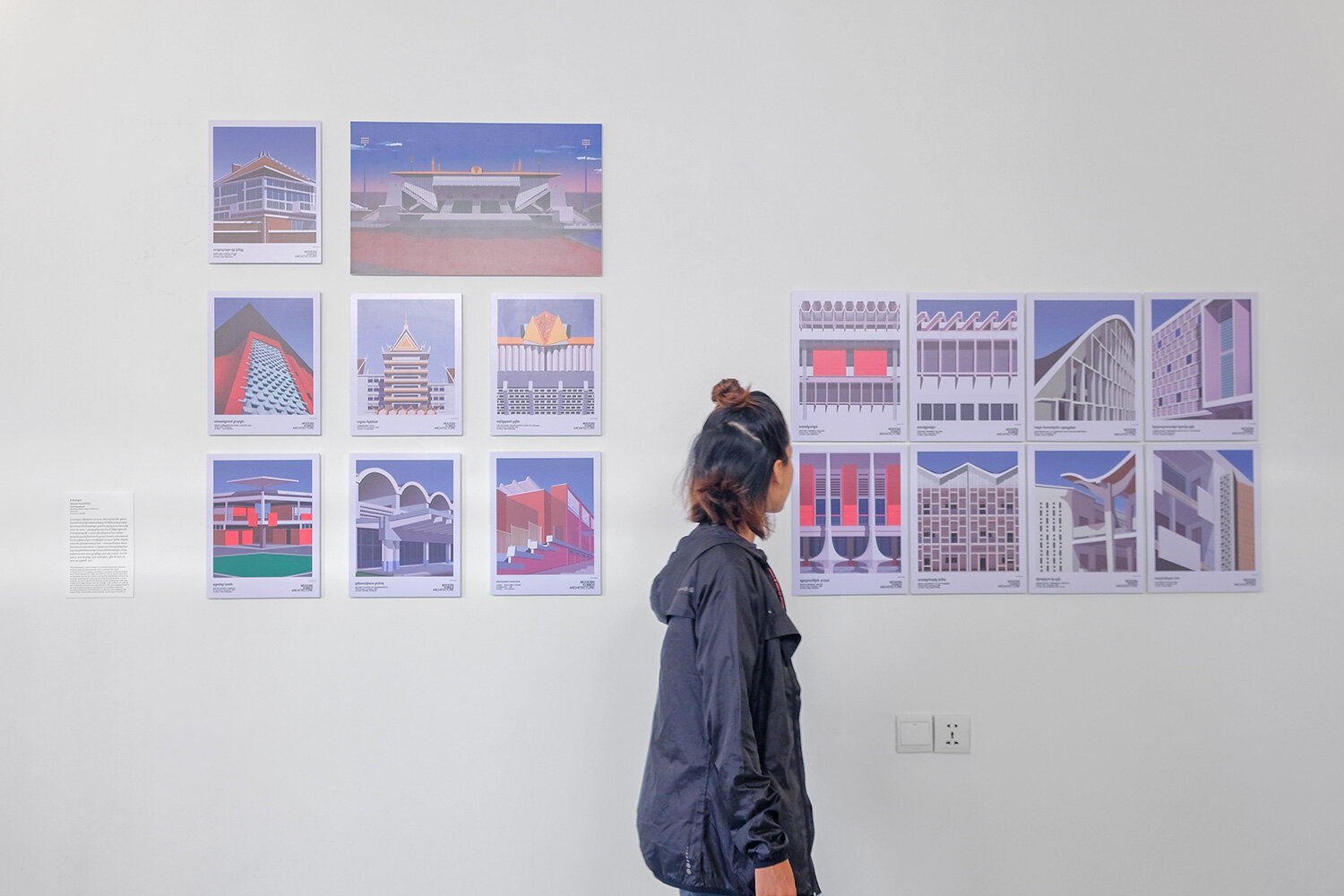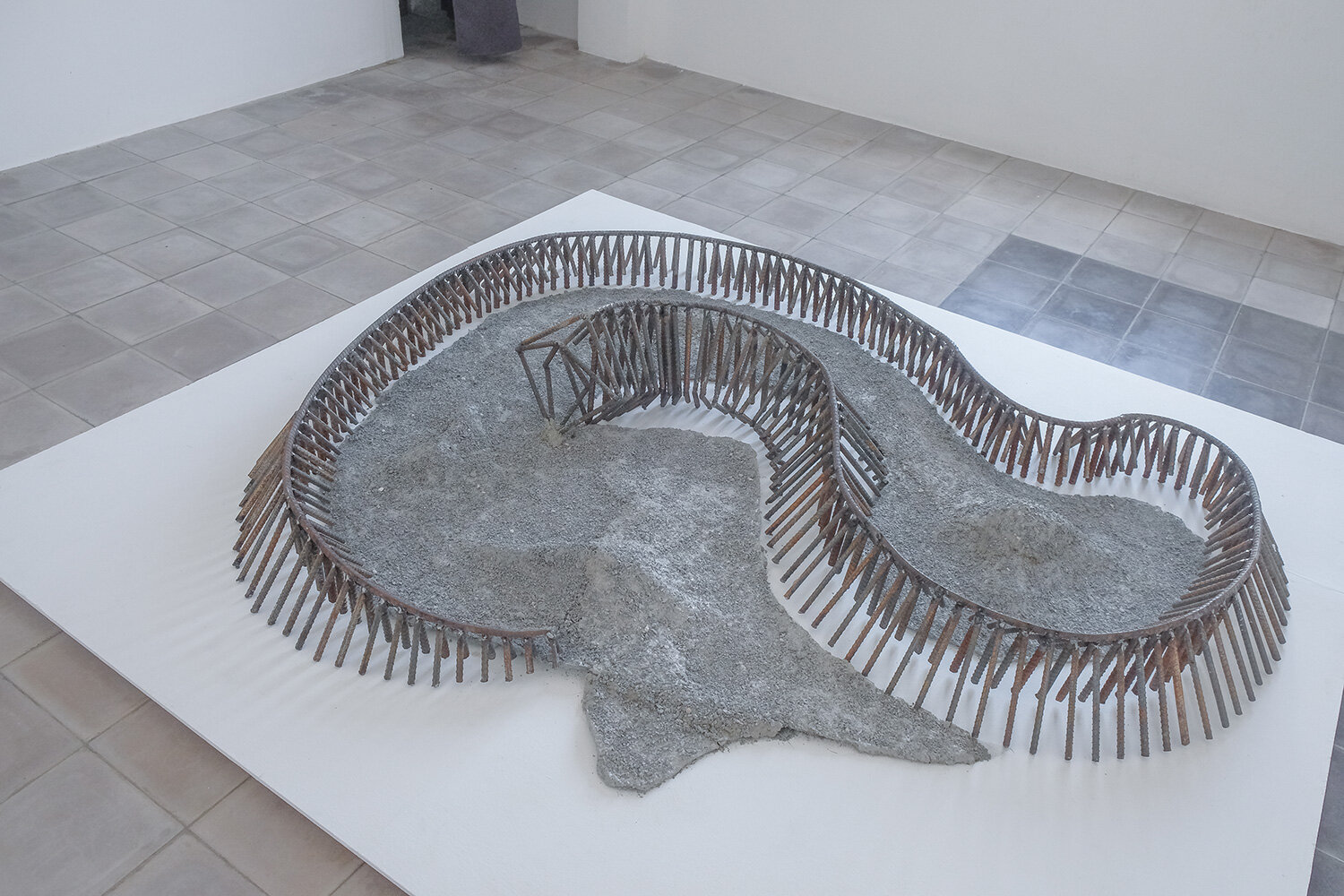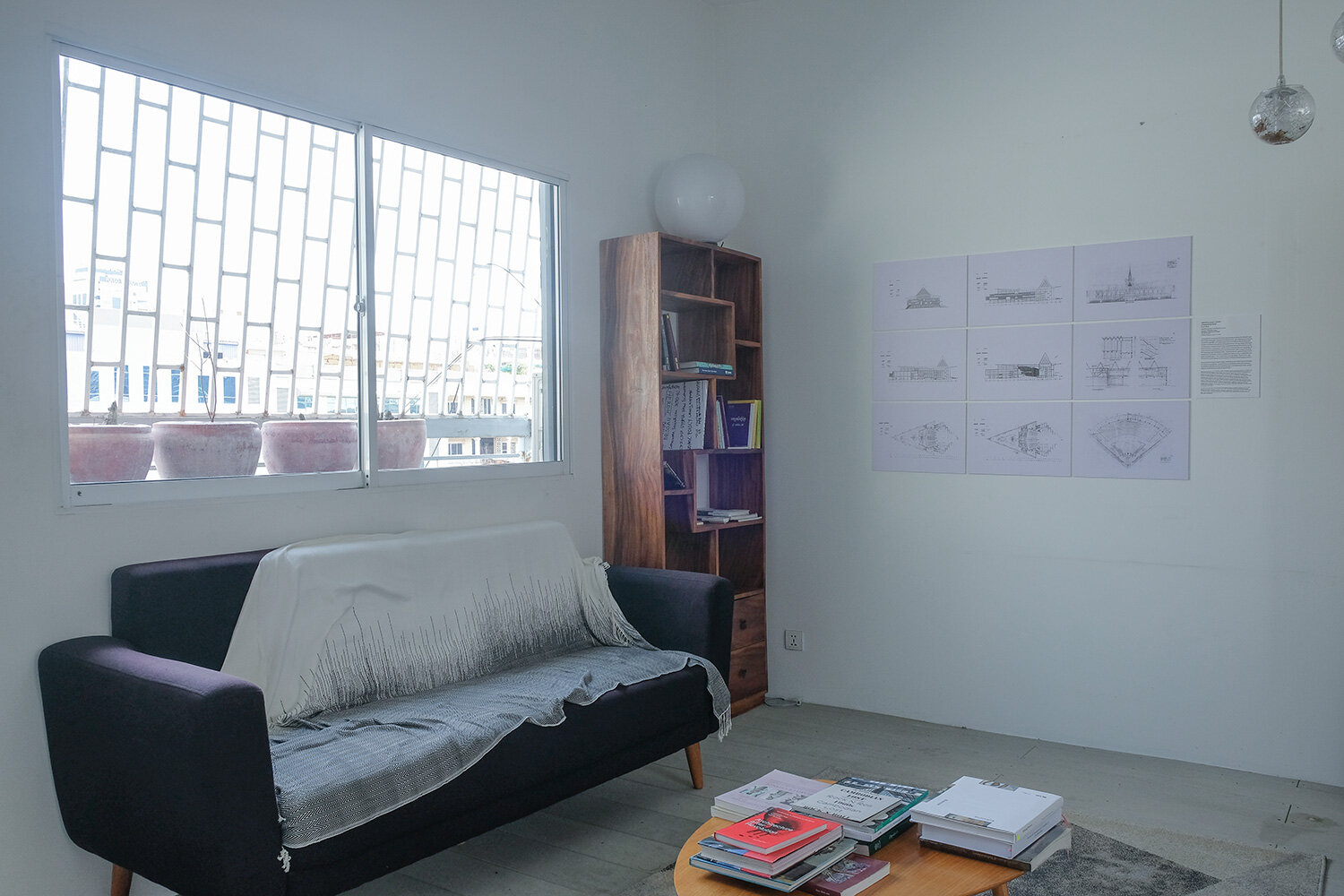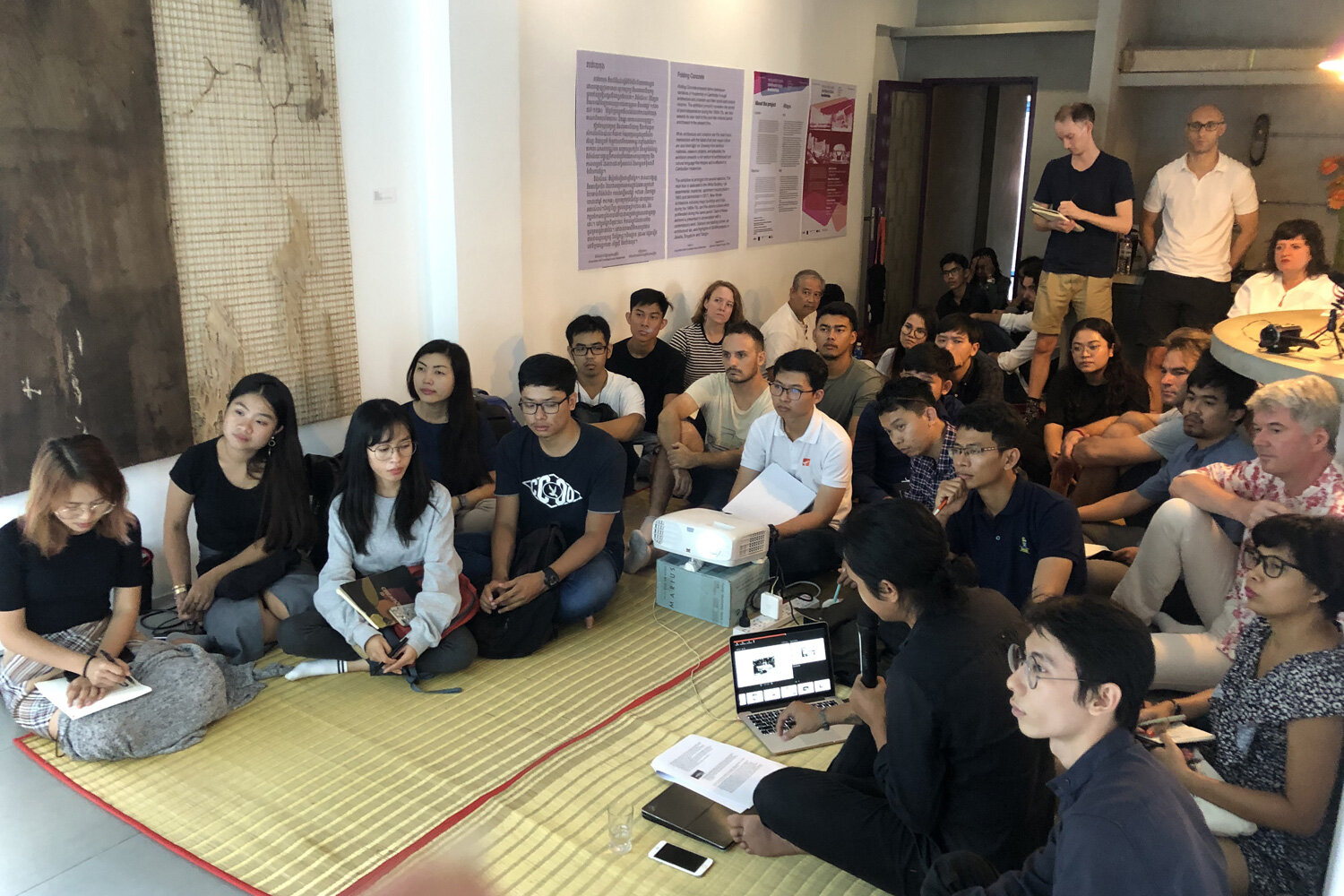
Folding Concrete: An Exhibition on Cambodian Modern Architecture and Urbanism
10 Oct - 3 Nov 2019
A transformed residential flat #122 4th floor, alley lane behind St 107, Orussey 4, Phnom Penh
Co-curators: Pen Sereypagna and Vuth Lyno
Curatorial assistant: Sin Many
Artistic direction: Sally Below, Moritz Henning, Christian Hiller, and Eduard Köegel
Participating artists and projects: Chhum Phanith, Loeung Sakona, Obayashi Corporation Archive, Pen Sereypagna & Genealogy of Bassac, Poum Measbandol, Prak Dalin, Roung Kon Project, Sopheap Pich, Stéphane Janin, The Vann Molyvann Architectural Lab, Vuth Lyno, White Building Collective
Partners: Bophana Audiovisual Resource Center, Khmer Architecture Tours, Dambaul
Contributors: Cambodia Film Commission, Jessica Austin, Masaaki Iwamoto
This exhibition is part of Encounters with Southeast Asian Modernism
Supported by: German Federal Foreign Office
The title Folding Concrete comes from three folds: firstly, in the 1960s, there were a lot of advances in technology that allowed architects and engineers to have more possibilities in design and construct structures in which, in Cambodia, folding concrete was popularly one of them. Secondly, the image of folding concrete represents identities of modern movement in Cambodia which has been seen on various structures such as public buildings, villas and monuments built in Sangkum Reastr Niyum period. Lastly, the folding form of concrete is not a straight line in a sense, it is bending toward multiple directions like ‘modernities’ in Cambodia—they have not come from one field of disciplines. They have grown from multi-fields such as art, culture, architecture, urbanism, industry, and technology.
Cambodian modernism through various disciplines was already manifest during the late French colonial period—either through the colonial power or with the negotiation of the Cambodian counterparts—such as in customary practices, education, literature, art, and architecture. There was an insistence on departing from the previous or traditional frameworks of thinking and cultural language, into innovating new forms and expressions that were reflective of the conditions and realities of the time.
Folding Concrete presents some interwoven narratives of modernism in Cambodia through architecture and urbanism and their social and cultural histories. The exhibition primarily considers the period of post-independence during the 1950s-70s, yet also extends its view back to the prior late colonial period and forward to the present time. While architecture and urbanism are the main focus, intersections with the fields of art and visual culture are also shed light on. Drawing from archival materials, research projects, and artworks, the exhibition presents a rich texture of architectural and cultural language that shapes and is effected by Cambodian modernism.
The exhibition is arranged into several sections. One section is dedicated to the White Building—an experimental, modernist, apartment housing built in 1963 (and demolished in 2017). Another section considers New Khmer Architecture which includes major state buildings as well as residential villas during the 1960s-70s. One section looks at the cinema culture which proliferated during the same period. Each of these sections is presented in conversation with a contemporary artwork. The exhibition also houses an architectural lab of students producing some new research, while a reading corner is stocked with books and journals on modernism in Cambodia, Southeast Asia, and other parts of the world with similar contexts. Highlights of Encounters with Southeast Asian Modernism projects in Jakarta, Singapore, and Yangon are also presented.







